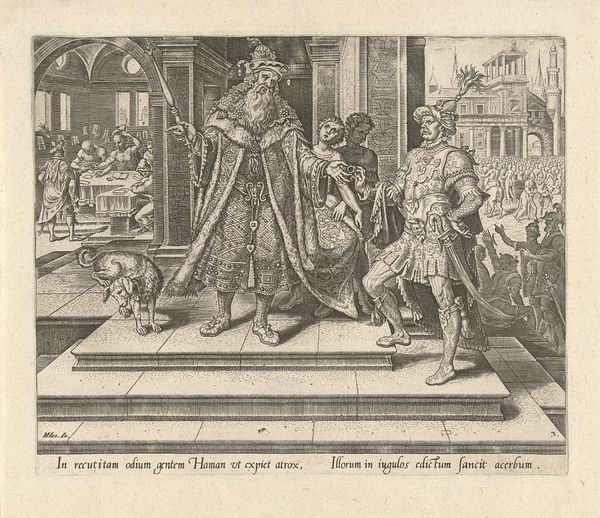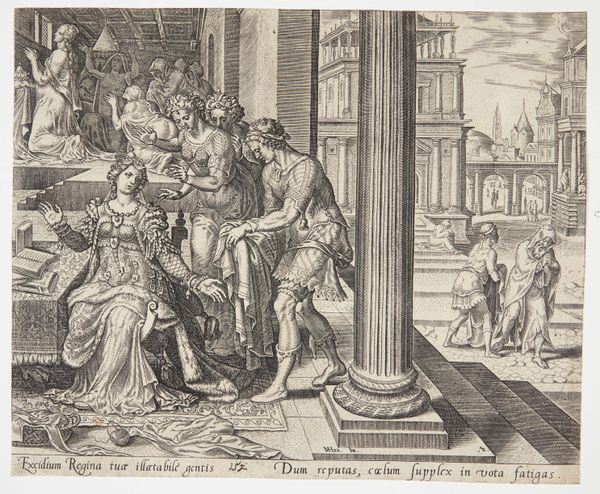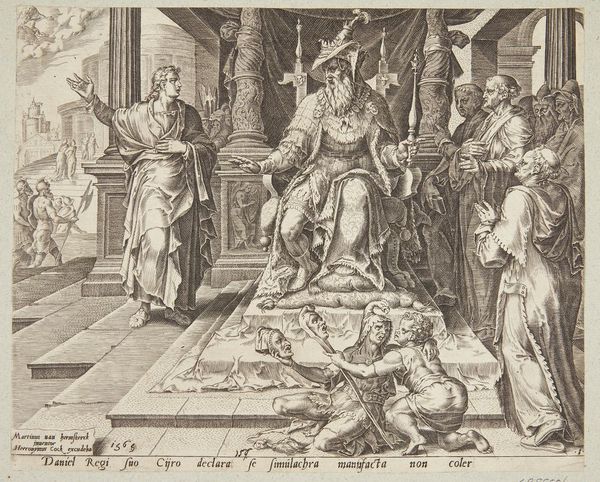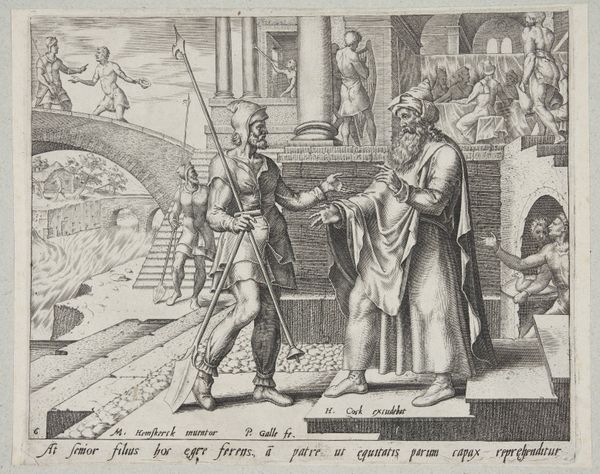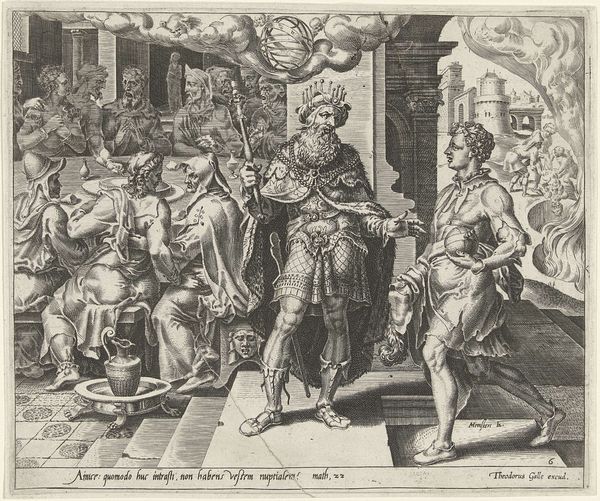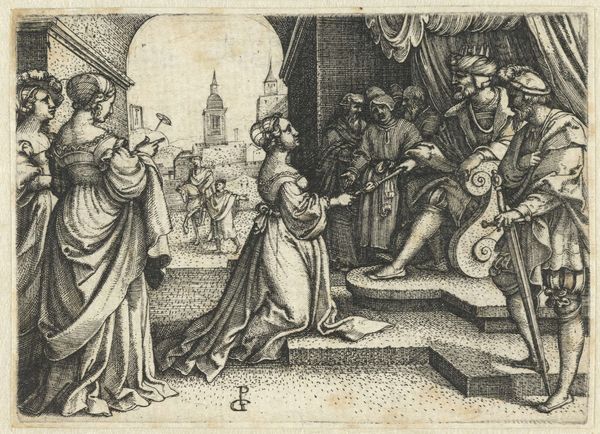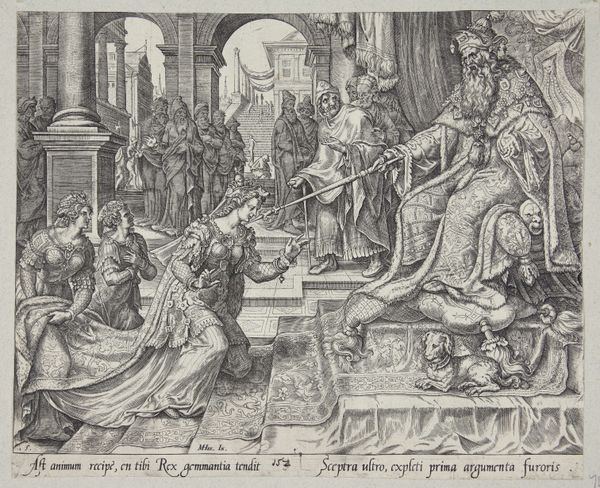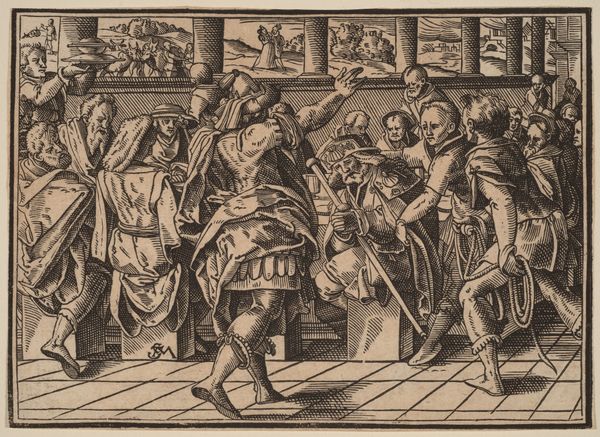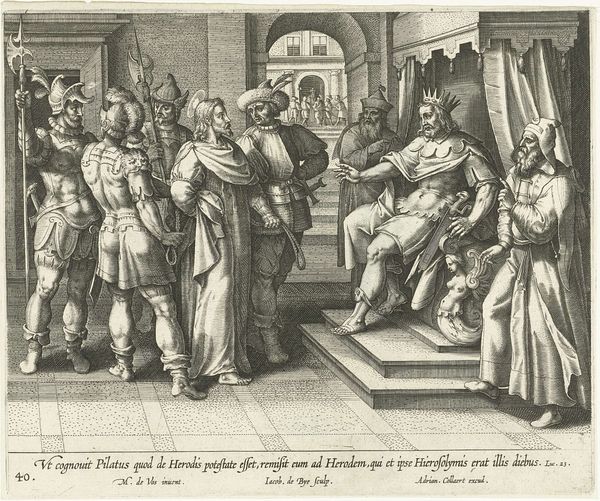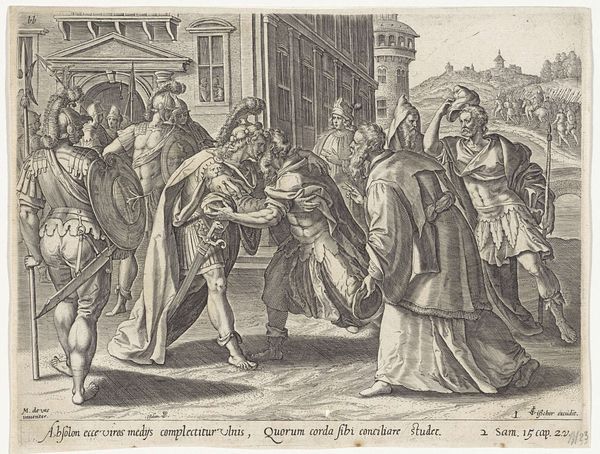
drawing, print, pen, engraving
#
drawing
#
allegory
# print
#
11_renaissance
#
pen
#
history-painting
#
northern-renaissance
#
engraving
Dimensions: 205 mm (height) x 245 mm (width) (monteringsmaal), 202 mm (height) x 243 mm (width) (bladmaal)
Curator: Welcome. Before us, we have a 1564 engraving by Philips Galle titled, "Ahassuerus commissions to destroy the Jewish people." The piece resides here at the SMK, the Statens Museum for Kunst. Editor: The visual density is striking! All the etching lines create such a deep contrast; I’m almost overwhelmed by a feeling of impending doom looking at it. Curator: The artist's use of line is definitely meticulous. Note how each figure, especially Ahasuerus, King of Persia, is meticulously rendered with details in clothing and posture that project power and authority. The structural elements frame Ahasuerus and Haman centrally. It almost feels like a stage set. Editor: The "stage set" aesthetic brings the narrative into sharper focus. I immediately recognize a disturbing through-line related to the persecution of Jewish people across historical timelines, from the story in the Book of Esther to this depiction during the Renaissance, and of course reverberating into modern contexts as well. It serves as a stark reminder of continued vulnerabilities. Curator: Precisely. Galle was working within a historical context saturated with religious tension. Formally, consider how the architecture of the palace creates a claustrophobic space, drawing focus back onto the king's command, the scepter he holds up so deliberately. Editor: That claustrophobia underscores how power can enable acts of cruelty with a mere decree, turning abstract prejudices into palpable threats and violence. Ahasuerus extends a scepter to Haman who is also poised ready for this act. Curator: True. We could delve much deeper into semiotics—the use of costuming and other signifiers of status, and what that communicated to audiences of the period, given the book’s narrative would have been so well known. Editor: Indeed. Beyond aesthetics, its lasting resonance lies in its critical social commentary. It holds power through this direct narrative interpretation of systemic oppression. It’s chilling and reminds us that visual art offers frameworks through which society interprets and possibly, challenges, systems of inequality. Curator: Yes, Philips Galle leaves us to consider the enduring presence of that threat.
Comments
No comments
Be the first to comment and join the conversation on the ultimate creative platform.
